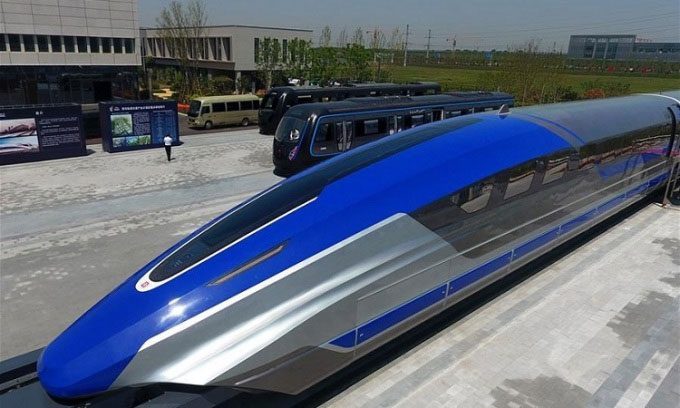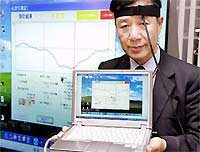Scientists have developed a method for wirelessly powering maglev trains while they are in motion, achieving unprecedented efficiency during testing.
The energy efficiency of a conventional wireless charger for smartphones is about 50%. When charging electric vehicles in motion using roadside chargers, nearly 80% of the energy is lost, according to recent experiments. However, a maglev train in Qingdao, Shandong Province, eastern China, designed to operate at a maximum speed of 600 km/h while levitating through magnetic force, can draw electricity from coils on the track with an efficiency of 92.4%.

Maglev train running at over 600 km/h in Qingdao. (Photo: CGTN)
The experimental results indicate that the wireless power transmission technology, based on research by scientists and engineers worldwide over the past few decades, is now feasible for railway transportation, according to the project leader, Wu Donghua, at CRRC Qingdao Sifang. Wu and his colleagues published their research in the journal of Southwest Jiaotong University.
Power supply is a significant engineering challenge in high-speed maglev technology. Although the train is propelled forward by magnetic force, most onboard equipment requires electricity. The batteries needed to provide power appear to be too large and heavy, while overhead wires cannot withstand the heat and wear at high speeds.
Linear motors, the traditional wireless power supply method used on maglev trains in Japan and Germany, can generate electricity at high speeds by directly harvesting energy from magnetic force. However, electrical interference occurring in the narrow gap between the train and the track can cause power transmission efficiency to drop by more than 50%. When the train stops at a station, linear motors cannot generate electricity.
The wireless power transmission system developed by Wu’s research team operates similarly to an induction cooktop. Their system is designed to convert direct current into a magnetic field using copper coils mounted on the side of the track. As the train passes over the charged coils, an antenna at the bottom of the train moves through the magnetic field and generates electricity through induction.
Turning this idea into reality is not straightforward, as the additional magnetic field can interfere with the magnetic force propelling the train forward. A significant amount of magnetic force also dissipates into the environment, reducing power transmission efficiency. To overcome these obstacles, Wu and his team focused on smaller details often overlooked, such as the shape of the receiving antenna, and developed an unprecedented design.
The new technology can provide over 170 kW of power to the train at any speed, exceeding the demand from the electronic hardware on a prototype car. The challenge of charging a train traveling at 600 km/h lies in supplying power to the coils, which require at least one second. The coils developed by Wu and his team are over 20 meters long, and the train can pass over them in the blink of an eye.
The research team noted that the proposed technology requires a highly powerful and precise control system to activate the coils just before the train arrives and deactivate them after the train passes. Otherwise, power transmission efficiency would significantly decrease. Due to the distance between the coils, the train also needs a good energy management system to ensure a continuous and stable power supply.




















































